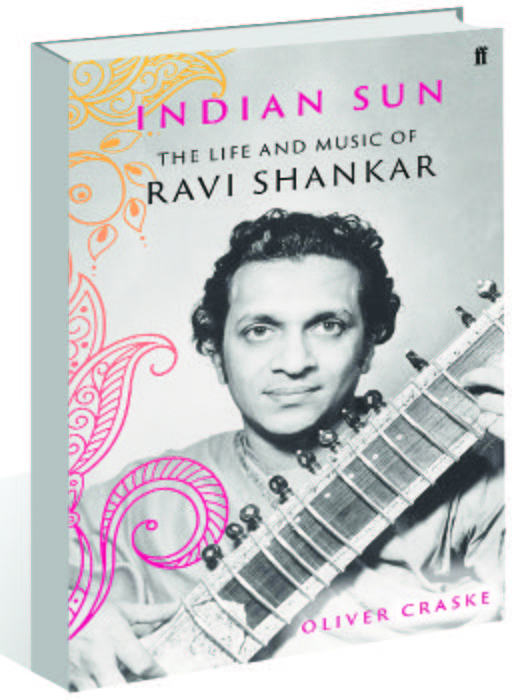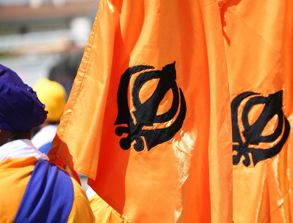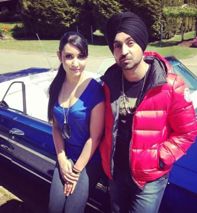Indian Sun — The Life and Music of Ravi Shankar by Oliver Craske. Faber & Faber. Pages 658. Rs 799
Book Title: Indian Sun — The Life and Music of Ravi Shankar
Author: Oliver Craske
Shailaja Khanna
Writing a book on Pt Ravi Shankar, who had himself written exhaustively on his life, must have been a daunting task even for Oliver Craske who was really close to him in the last two decades of his life and had access to his private letters.
Pt Ravi Shankar was a larger-than-life, multi-hued personality with so many dimensions to his music — his extraordinary stature in the Western world, his prolific musical compositions and collaborations with so many musicians being the most obvious. Though Craske has tried to do justice to the immense material he had to deal with, he succeeds more in the realm of exposing hitherto unknown facets of Pt Ravi Shankar’s life, and very perceptively analysing his complex nature, rather than his music. That the book is written for a Western reader, from a Western perspective, may have been an important factor in the focus of the book.

A prodigious read at 658 pages, the work has uncovered literally every aspect of this amazing man who truly “had one of the most extraordinary lives of the 20th century”. It traces the maestro’s journey from his early life in Varanasi. Brought up without a father, Craske unveils Pt Ravi Shankar’s loneliness as a child, his sensitivity and attraction to women — aspects that forged his personality as an adult. His experiences in Europe are dealt with at length. Quotes from Benjamin Britten’s diary in 1937 of his being impressed by the dancing of “Robindra” (Pt Ravi Shankar) reveal the intensive research this book inspired. Apparently, it took Craske six years and more than 130 interviews to put it together.
An interesting incident recounts how a young Robindra almost went to learn the sitar from the finest sitariya of the time, Ustad Inayat Khan. The subsequent rivalry between Ustad Inayat Khan’s son, Ustad Vilayat Khan, and Pt Ravi Shankar inevitably makes its way to the book written, obviously, from Pt Ravi Shankar’s perspective.
Disappointingly, Pt Ravi Shankar’s musical training under Ustad Allaudin Khan in Maihar in Chapter 4 is not expanded upon, despite the fact that his absorption as a musician was so spectacular that he was permitted by his exacting Guru to play his first ‘jugalbandi’ concert with Ustad Ali Akbar Khan in 1939, after only 18 months of training!
Pt Ravi Shankar’s unrivalled success in the West is elaborated upon at length; his prolific ability as a composer and the journey of his slow rise to stardom are themes Craske lingers on; what one misses is an analysis of Ravi Shankar’s legacy; what history will judge him for.
Interspersed with personal history are nuggets of information on music, the instrument, the lineage, etc., making the book an exhaustive read. The day-to-day details of his life in the 1960s and 1970s are a tad long winded, but would be unmissable to die-hard fans. In terms of chronological detailing, Oliver Craske’s book may well turn out to be the last word on Pt Ravi Shankar.
Unusually for a book written about such an iconic figure, Craske delves into several very personal details, some not particularly savoury, including how the maestro was raped as a young man, his attempt to commit suicide in the 1940s, his several extramarital relationships ending in the breaking of his marriage, his allusion to the affairs of his wife Annapurna Devi. Writing with an engaging frankness, Craske refers to Ravi Shankar’s “double standards” as his bond with his friend Biman Ghosh remained unaltered for years even though he (Pt Ravi Shankar) had accused Ghosh of having an affair with his wife. Quoting Anoushka Shankar, Craske writes, “Looking back at my father with my understanding that addiction is a family illness, I feel a new compassion for what he may have struggled with in silence.”
After reading Indian Sun, one can only agree with Craske’s remark about the “fundamental conflict within him, between his unrivalled mastery over the classical Indian idiom and his bug to communicate his art to the West”. This is a must read book for any lover of Indian music.














